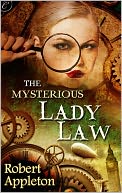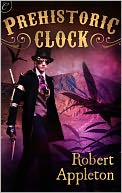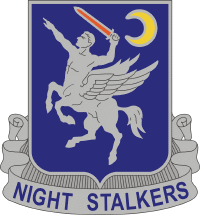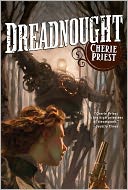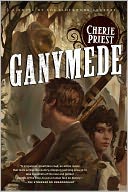 Wilder’s Mate by Moira Rogers turned out to be the perfect story for reading on a chilly winter’s night. Not only is this first entry in Rogers’ Bloodhound series a terrific blend of romance, steampunk, and steamy sex, but the hero is even described as having a higher than normal body temperature!
Wilder’s Mate by Moira Rogers turned out to be the perfect story for reading on a chilly winter’s night. Not only is this first entry in Rogers’ Bloodhound series a terrific blend of romance, steampunk, and steamy sex, but the hero is even described as having a higher than normal body temperature!
But the story of Wilder’s Mate starts with the “mate” in question. Her name is Satira, and she’s the apprentice to a Guild inventor named Nathaniel. The only problem is that Nathaniel’s just been kidnapped. Satira wants to assist whichever Bloodhound the Guild sends to recover him. One tiny detail: she’s trapped in the elevator.
Nathaniel’s inventions, including the steam-powered elevator that was currently vexing Satira, were the reason he was kidnapped by the vampires inexorably taking control of the very wild West in this steampunk version of the post-Civil War United States.
The vampires represent the lawless, and the Guild represents the law. In order to combat the powerful vamps the Guild has created a weapon of their own, creatures known as Bloodhounds. The Hounds used to be mere men, but alchemy has transformed them into powerful beings that can hunt and kill vampires with terrible speed, as well as claws and fangs. Bloodhounds are werewolves, the traditional enemy of the vampire.
These Hounds have a weakness. Not the traditional one. They don’t change into wolves at the full moon. They change into wolves at will. But at the new moon, they must have sex. A lot of it. For three days and nights. The Guild pays a network of brothels to be available for the Bloodhounds, and they pay well for the service.
The Bloodhounds also have a secret. Like wolves, they mate for life. If a Hound finds his mate, he has to protect her at all costs. If she dies, he follows within months. The alchemy that created the Hounds was not intended to pull this particular rabbit out of its hat, but there is no denying the fact that it has. The Guild doesn’t want the Hounds to find their mates, but when it happens, there’s nothing they can do.
Satira knows a lot about Hounds. Her mother lived with an old Bloodhound named Levi for about a dozen years. Levi helped to raise Satira, and Levi found her the place with Nathaniel before he died. Satira never knew that her mother was Levi’s mate. Her mother probably didn’t know either. But when her mother died, so did Levi.
Satira also enjoys the heat, the adventure, the roughness of sex with a Hound. She just doesn’t understand why none of the Hounds who have ever shared her bed have never come back. She thinks there’s something wrong with her.
But the Hound who pulls her out of that busted elevator knows exactly why none of those other Hounds have ever stayed, because it’s taking every ounce of restraint he has not to take her the moment he sees her. And Wilder Harding isn’t ready to do that until Satira understands exactly what’s at stake for both of them.
Because Satira is his mate.
Escape Rating A-: Wilder’s Mate is one of those stories where you just buckle up and hang on for the ride. This was an absolute blast from beginning to end. The story is very, very steamy, but there is a story and there is a romance and a happily-ever-after.
 The story elements reminded me of several bits I’ve read before, but since those were all things I’ve liked, I didn’t mind. Satira’s situation is similar to Jaines Cord in Shona Husk’s Dark Vow, the woman apprentice to a steampunk-type gunsmith because women aren’t allowed to be master gunsmiths. The Bloodhounds mating-for-life compulsion being an unexpected side-effect of their change has some eerie similarities to the Breeds in Lora Leigh’s series. But it definitely works in both series!
The story elements reminded me of several bits I’ve read before, but since those were all things I’ve liked, I didn’t mind. Satira’s situation is similar to Jaines Cord in Shona Husk’s Dark Vow, the woman apprentice to a steampunk-type gunsmith because women aren’t allowed to be master gunsmiths. The Bloodhounds mating-for-life compulsion being an unexpected side-effect of their change has some eerie similarities to the Breeds in Lora Leigh’s series. But it definitely works in both series!
For a short book, Wilder’s Mate wrapped all its loose ends very nicely. Great story and fantastic beginning to a series. I’m definitely looking forward to more!





